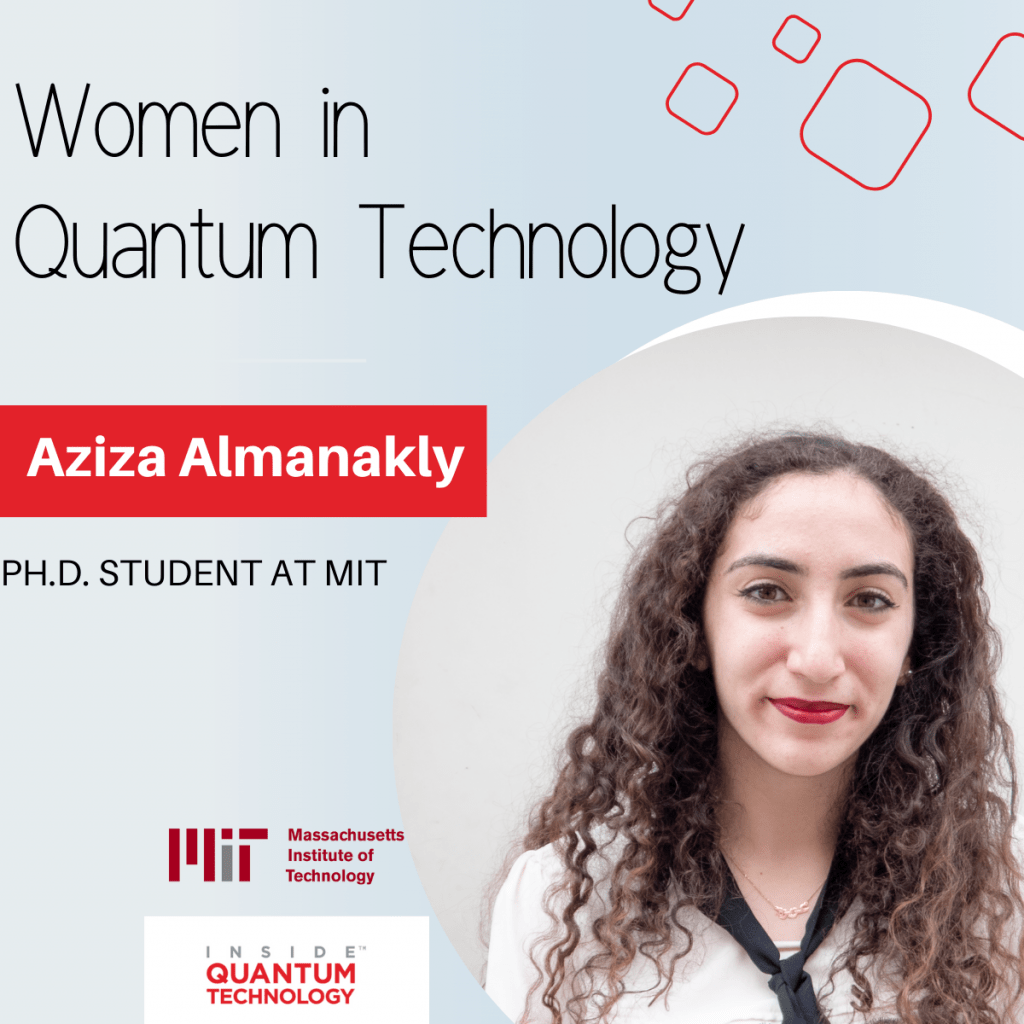Regarding quantum education, the Massachusetts Institute of Technology (MIT) is one of the leading quantum technology research institutes. For graduate student Aziza Almanakly, this allows her to work with some of the leading experts in quantum science. “I am working with Professor William Oliver in the Engineering Quantum Systems group,” Almanakly told Inside Quantum Technology. “There, I focus on superconducting quantum systems, specifically microwave quantum optics for communication. As these systems expand, quantum interconnects become critical for scaling up modular quantum computer architectures. Here, the carrier of quantum information is a microwave photon, and I am working on a way to route photons between superconducting chips.” As this setup is used in many different quantum devices, Almanakly’s experience gives valuable experience she can use later in her quantum career.
Before arriving at MIT, Almanaky came across quantum computing almost in passing. Her first exposure to the technology was in an article in the Wall Street Journal in 2017. “I studied electrical engineering in college at Cooper Union, and quantum computing fell on my radar as an exciting emerging technology,” Almanaky stated. “I worked for a summer in a research lab at Princeton through an REU (NSF Research Experience for Undergraduates) focused on developing spin qubits from electrons on superfluid helium, and from then on, I was hooked. Since then, I dove more into the research and hardware side of quantum computing, studying different types of qubits.” Almanaky’s resume also includes being a researcher at the Advanced Science Research Center at GC/CUNY and Kavli Nanoscience Institute SURF-the-WAVE Research Fellow at Caltech. Almanakly is now a PD Soros Graduate Fellow and a Clare Boothe Luce Graduate Fellow at MIT.
Now, as an MIT graduate student, Almanaky is part of the incoming quantum workforce, which she believes needs to promote more inclusivity and diversity. “Diversity in the field can be improved by making STEM more accessible to all groups in general,” she highlighted. “More specifically, early exposure to technology can spark a young student’s interest. Providing young students with information and guidance on pursuing STEM interests is also important. A good example is an online course I helped teach — Qubit by Qubit by The Coding School. Initiatives like this help bring emerging and seemingly mystical technologies such as quantum computing into the reach of high schoolers.”
Kenna Hughes-Castleberry is the Managing Editor at Inside Quantum Technology and the Science Communicator at JILA (a partnership between the University of Colorado Boulder and NIST). Her writing beats include deep tech, quantum computing, and AI. Her work has been featured in National Geographic, Scientific American, Discover Magazine, New Scientist, Ars Technica, and more.
